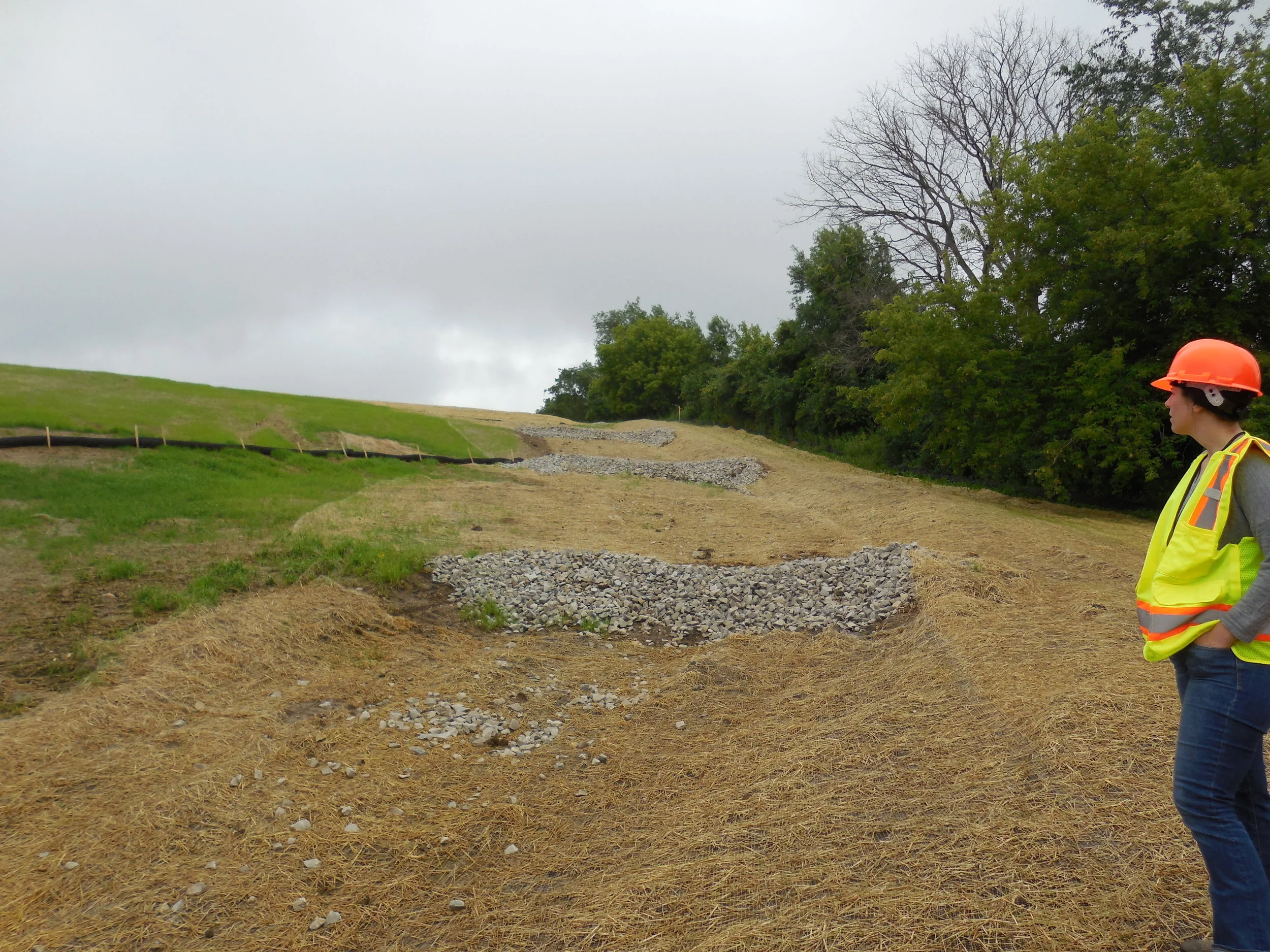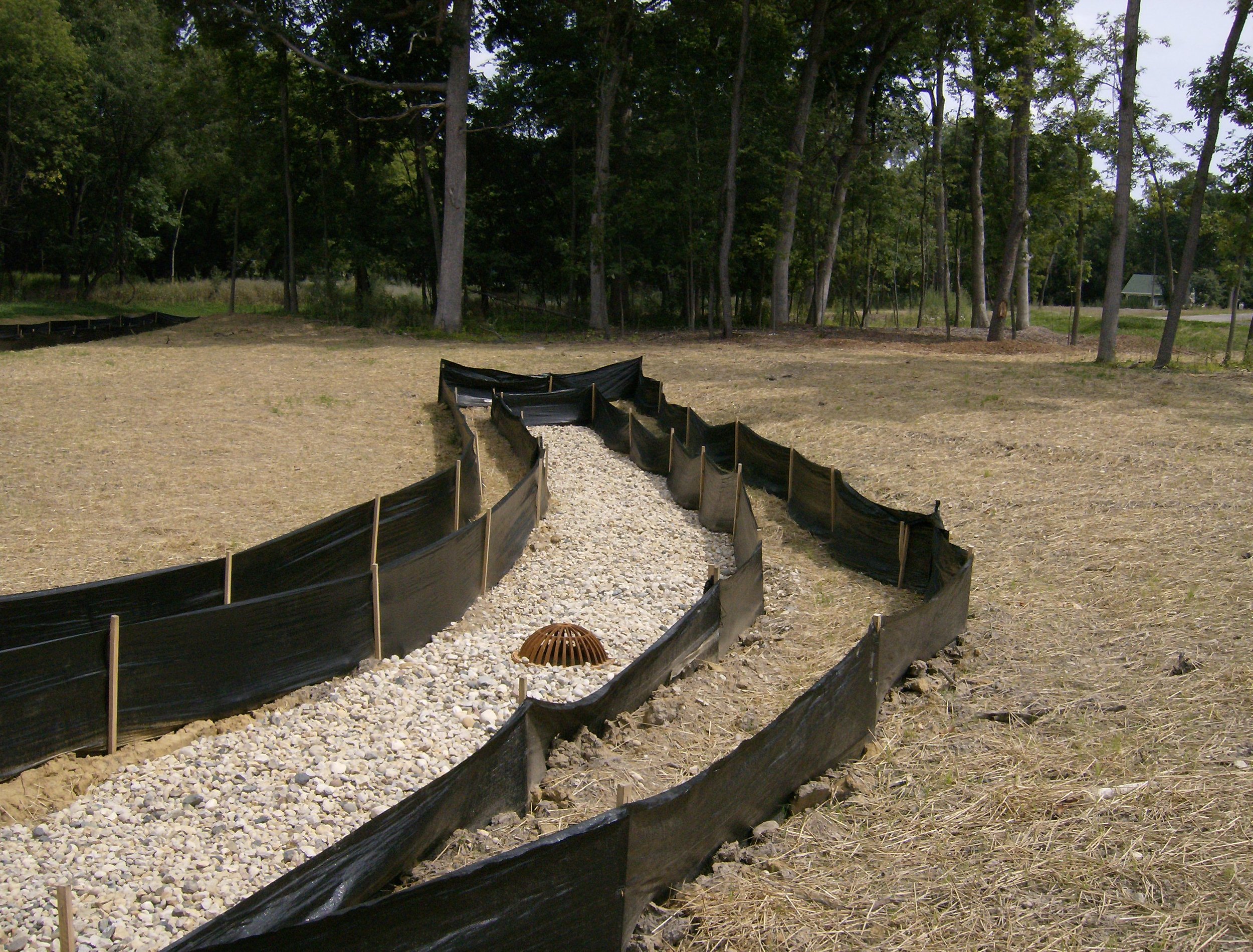Active construction sites continue to be a major source of pollution in our local lakes, streams, and wetlands. Excess sediment and nutrients reduce water clarity, increase water temperature, and accumulate on top of streambed and wetland habitats. This negatively impacts fish and aquatic species’ survival and reproduction, promotes algae and aquatic plant blooms, and can cause recreational and public health problems such as harmful algae that can cause illness for people and pets. Managing construction sites and using appropriate sediment and erosion controls can prevent sediment-laden runoff from impacting local waterways. Just like training for a new skill or a new piece of equipment, training is needed to show construction site crews how, and when to install and maintain erosion control practices on construction sites.
Construction site runoff in Lake.
Best Management Practices, or “BMPs”, are used for both sediment and erosion control. Sediment control typically refers to capturing sediment particles that have been dislodged from exposed soils during rain events or during other water-related activities on a site (such as truck or equipment washing, dewatering, etc.). Examples of sediment control BMPs include sediment traps/basins, ditch checks, and dewatering practices.
Silt fence and mulch in infiltration basin during construction.
Erosion control BMPs are designed to prevent sediment from dislodging from the exposed soils, or eroding, in the first place. Examples of erosion control practices include seeding and mulching/matting to establish plant growth in recently disturbed areas, or limiting the areas to be worked during construction.
There are multiple training courses presented on construction site pollutant control annually. Currently scheduled sessions include:
NASECA-WI Construction Site Erosion Control and Stormwater Permit Compliance Training
November 28-29, 2019
Waukesha, WI
Learn MoreWisconsin Sedimentation & Erosion Control Inspector (WISECI) Best Management Practices
November 14-15, 2019
Milwaukee, WI
Learn More
These 2-day training sessions are ideal for construction crews, supervisors, site engineers, and erosion control inspectors. They are also beneficial for municipal staff that are involved in the review and/or inspection of erosion control plans and permits. Attendance by municipal staff at these training events should be reported in your MS4 Permit Annual Reports.
A considerable amount of time and investment is spent on planning, designing, and constructing storm water and agricultural runoff control practices to meet TMDLs and other regulatory requirements. We have to be aware of how a construction site that is not using erosion and sediment controls properly can negate the progress we’re working so hard to make to reduce the pollution in local waterways. Discharges of muddy runoff from construction sites can send sediment, phosphorus, oil and grease, and other pollutants into local waterways. This results in in-stream sampling and monitoring data that show further water quality degradation, rather than showing the expected improvements based on recently installed storm water and runoff controls in our communities. Improving the health and sustainability of our streams, lakes, and wetlands cannot be achieved solely by one group or another. To successfully control the sources of pollution and improve our waterways, individuals, businesses, and industries all need to be aware of the impacts their actions – or lack of actions – can cost.
About the Author
Maureen A. McBroom
Environmental Coordinator
Maureen is dedicated to the protection and improvement of Wisconsin’s resources through close collaboration with municipalities and their citizens. Efficient & effective implementation, driven by strong relationships and communication, are drivers behind her project implementation strategies. She has experience in the WDNR’s Runoff Program, specifically issuing WPDES Permit coverage for construction site erosion control & long-term storm water plans, industrial storm water sites and municipal separate storm sewer system (MS4) permittees. Maureen has been with R/M since 2015.







